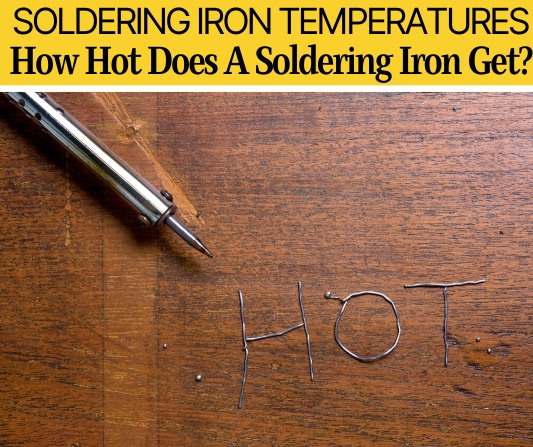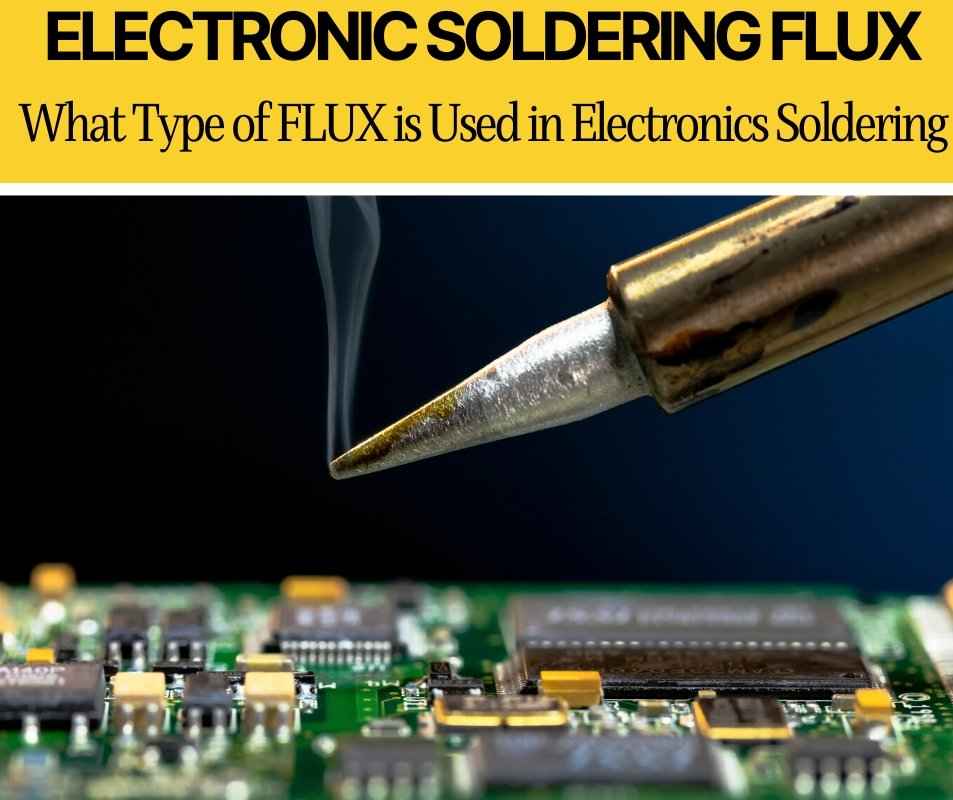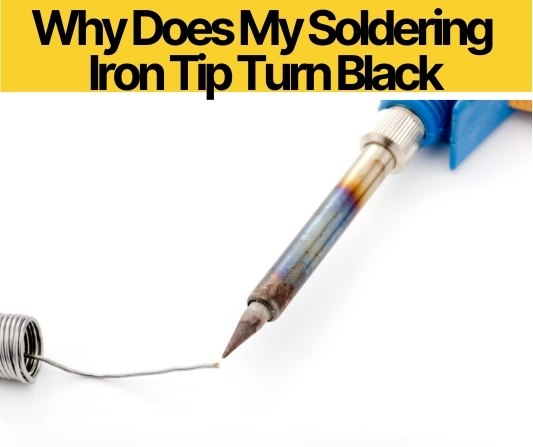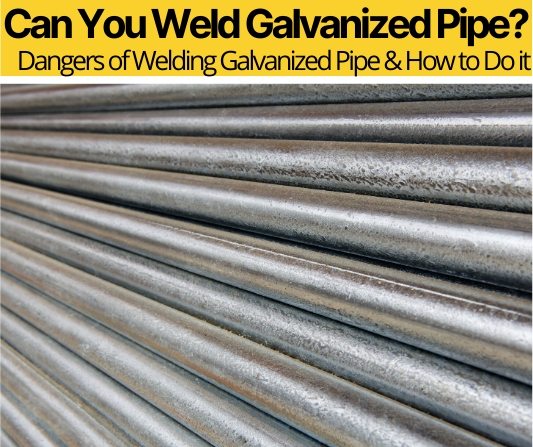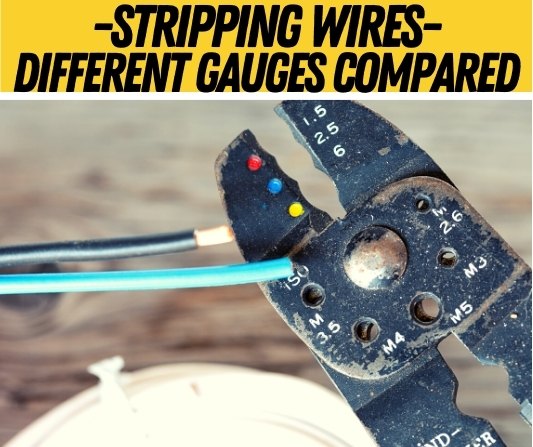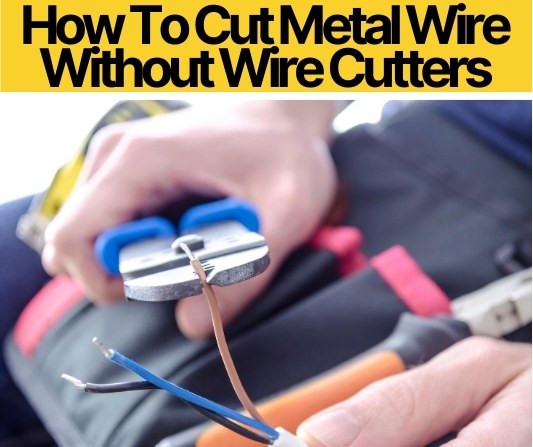 The terms soldering and welding are thrown about, a person may use one when they mean the other, but the two processes are fundamentally different.
The terms soldering and welding are thrown about, a person may use one when they mean the other, but the two processes are fundamentally different.
While both are methods of joining two metals together, what makes them different?
In this Article we will cover Which one should you should be using, If Soldering can Replace Welding and what materials you can solder instead of having to weld them.
Soldering Vs. Welding
Sometimes, both soldering and welding can be used to complete the joining of two metals, and you may choose soldering because it’s cheaper, requires less skill, and can often be more easily done. In general, soldering and welding are not interchangeable processes, as they work on different metals, for different purposes.
Welding is usually used for structural purposes, such as railroads and piping, and therefore requires an incredibly strong bond. Soldering, on the other hand, is often used for electronics and plumbing, when the combining of two metals is not put under pressure. Soldering and welding also have fundamental differences in their processes, such as the temperatures required and the metals used.
Differences between Soldering and Welding
The two biggest differences between soldering and welding comes down to the temperatures and base materials. Soldering happens at far lower temperatures, usually between 300°C-500°C, depending on the solder and soldering iron. Welding takes places at temperatures anywhere between 2,000°C-6,000°C. The second biggest difference is as a result of the temperature, as soldering only melts the solder to fuse it to the base metal, while welding melts the base metal as well, hence the high temperatures for the process.
Soldering typically uses metals such as copper, tin, gold, silver, lead and brass. You can easily find what metals are good for this process by researching their solderability. Welding is used on metals with a high melting point such as steel, aluminum, nickel and titanium. Copper can also be used in welding but generally, only when there is a large amount of it. Welding is generally used on bigger jobs, whereas soldering is for the small alterations.
Welding is a far more comprehensive process that would require a work station with lots of different tools and safety equipment. It must be done in a safe environment and, can be harder to do at home. Acquiring all the equipment is, on average, more expensive for welding than soldering. Soldering is easily done at home, and requires less components and safety equipment.
If you are unsure whether you should be soldering or welding, you can ask yourself two questions: what do I want to get out of this process? What metals am I using? If you’re looking for something quicker, and functions on the basic level of joining two metals together, soldering is the answer. If the joint does need to withstand structural pressure, welding is your answer. But the solderability of a metal must be checked before you begin soldering, otherwise a poor joint could easily be the result.

Can soldering replace welding?
Soldering can replace welding in scenarios, in which the base metal does not need to be melted and fused with the other metal, and they both have a good solderability. For example, if this was for the purpose of plumbing, where the joint will not need to withstand enormous pressure, and the metals used could be easily soldered, then there is no reason why soldering shouldn’t be used over welding.
However, in most cases soldering cannot replace welding. Welding melts the base metal, which soldering cannot do, and achieves temperatures that soldering cannot even get near. The important part to remember is that soldering is a weaker joint, and therefore cannot be put under any great amount of pressure. It may, in fact, be a safer option to weld in some cases rather than to solder, if you’re unsure of the amount of pressure the joint will need to withstand.
Is solder as strong as welding?
Soldering is never stronger than welding unless you are comparing a good soldering joint with a bad welding job. Soldering requires the solder to melt at a lower temperature to the base metals, which generally means the base metals will be stronger than the joint. Welding involves the melting down of the base metals for a joint or seam, which means the joint becomes as strong as the surrounding metals.
Soldering should rarely be used for repairs that requires the joint to go under any significant pressure, as it simply won’t hold. Welding guarantees a strength that soldering cannot.
Soldering Vs. Welding – Which is better?
Neither soldering nor welding is better than the other, it comes down to the application of the two processes. Soldering is far better for delicate processes, and allows a degree of precision that welding does not. Welding may not allow for so much precision, but will create an incredibly strong, permanent joint that has more application than soldering. Welding has many different techniques, in which to undertake the process, giving it a wide variety of application in various industries. Soldering’s usage, in comparison, is far more narrow.
Advantages of soldering over welding
Soldering is excellent on usage for electronics, such as PCBs (Printed Circuit Board) and SMT (Surface Mount technology), wiring and plumbing. In these scenarios, the joining of two metals is often for the purpose of mounting components and to allow an electrical current to flow. Soldering can allow the combining of two metals in this way, quickly and easily. Soldering is relatively simple process, that doesn’t require many tools or equipment, allowing these processes to happen efficiently.
Joints in electronics can often be small and fiddly, a process that is too small for welding. Soldering allows minute alterations and joints to take place. Using welding in this situation would be a disaster, as you would end up destroying the entire circuit board.
As previously mentioned, the amount of delicateness that soldering allows means its application spans more aesthetic processes, such as stained glass and woodburning. Being relatively cheap to acquire the starting tools and equipment, it makes soldering and easier hobby and skill to pick up, and can be more rewarding in some ways, as its application can be more crafty, compared to welding.
Related: Can You Weld Galvanized Pipe
Advantages of welding over soldering
Welding’s aforementioned strengths means its application is far wider than soldering. Welding is used in almost every construction process than involves metal, from the creation of a house, tank, lamp or phone. While this means welding takes more skill and training to achieve a good welding joint, and there are many different ways to weld that have to be learnt, it means that once you achieve proficiency, the range of possibility is far larger than with soldering.
Soldering simply couldn’t be used to fuse two metals together for applications such as: automobile parts or steel structures, for two reasons. The obvious one is soldering has limited strength, but soldering is also not very good with metals such as steel. One of welding’s main advantages is its application with steel, which is a benefit that crosses into many different industries.

When can you Use Solder to Weld
Solder’s use in welding changes from case to case. As a general rule of thumb, you do not want to be using solder on anything that needs a strong joint, as solder is weak in comparison to welding two metals together. However, there are some scenarios in which it may prove beneficial in terms on cost and time.
Read also: Why Does My Soldering Iron Tip Turn Black
Steel
One downside to welding is that the metals have to be similar, otherwise they won’t join together properly. In cases when you want to join steel with another metal, such as copper and steel, soldering can come in handy. Choosing the appropriate solder and flux is important to get a clean, proper joint. Also using a soldering iron that gets to the correct temperature will ensure a proper joining. Advisably, you want to use brazing, not soldering, for steel. Brazing will allow the joining of steel more easily, as it reaches higher temperatures than soldering.
Welding is still the most ideal way to join two pieces of steel together, especially if it is a larger joint or needs a long seam, but soldering is possible for smaller jobs.
Cast iron
Soldering can be used for cast iron, but requires a propane torch, and not just simply a soldering iron, as the temperature will need to be higher for a cast iron soldering job. It is important when soldering cast iron not to heat the solder directly, but rather, add the solder to the location of the desired joint, and heat it altogether. This allows a stronger joint to form as the solder will move into the gap between the two pieces of cast iron. This must be achieved with clamps to secure the two pieces of cast iron close to each other, allowing the solder to fuse properly. Soldering cast iron is very difficult and require special flux and solder.
The soldering of cast iron is perfectly acceptable for crafts or ornamental purposes, as it can be an easier way to join two pieces at home. Anything that needs structural integrity will need to be welded properly, as solder simply does not have the strength.
Aluminum
Soldering aluminum can be difficult, especially if you do not know what the aluminum is alloyed with. It is possible to find pure aluminum, but often it is alloyed with another metal, because of this it’s difficult to work with. Using a flux and solder that is made for aluminum is imperative to ensure the joint will fuse, and a torch is needed if the aluminum joint is going to fuse properly.
The best method for creating a joint between two bits of aluminum is brazing, as it can effectively join the two at a high temperature. Soldering aluminum may be useful for both car parts and an electronics board. Soldering aluminum to aluminum is very difficult, and should not be attempted by a beginner. Soldering aluminum to another metal, like copper is more advised.
Brass
Brass, when it is thin and wiry, can be one of the easiest metals to solder, a good starting material for beginners. You don’t have to have flux, but it is advised. Brass is also cheap, so it’s a good material to play around with and practice on. It is easy to solder to other pieces of brass, or other metals with high solderability.
Brass is used in jewelry and ornaments, so is good if you’d like to make your own at home, or repair a damaged or old personal item. In terms of commercial use, soldering brass is a process used in plumbing jobs, to weld two pipes or components together. Using a torch will make the process a lot easier, and less tedious, as it allows you to apply the heat quickly and fuse the joint more efficiently.
Welding nylon with soldering iron
Nylon can be a lot trickier than metals, if you’re not careful, as the webbing of nylon can act similarly to plastic. If too much pressure is applied with your soldering iron, or you go too fast along the material, you can easily ruin your soldering iron, by melting nylon on the tip.
A good piece of a advice is to keep rubbing the tip with a piece of sand paper, to avoid any nylon from sticking. Soldering irons can be used with nylon, it is best to act cautious though, and perform soldering as quickly as possible. Soldering irons are actually really useful when working with nylon, as the soldering iron allows you to seal loose threads and ends easily. When you make an incision or hole, the threads immediately seal up, making it easier than using scissors or another tool.
Welding polypropylene with soldering iron
Polypropylene is often used for piping in houses and buildings. The pipes under your sink could quite possibly be polypropylene. The first thing to remember when welding polypropylene with a soldering iron is that it is coated with a protective layer. You want to make sure that is evaporated from the area you want to solder before you begin. Professionals will use a soldering machine specific for connecting pipes, but it is still possible to do at home, especially just for simple repairs.
Polypropylene heats up very fast, and has a relatively low melting point, is it is advised to use a soldering iron with a temperature regulator, especially if soldering onto another material.
What metal cannot be soldered?
The aforementioned cast iron is amongst the most difficult metals to solder, along with chromium, titanium and magnesium. These metals are also on the expensive side, so it would be advised to find an alternative, if possible, as success with soldering with these can be limited. If you’re desperate to use one of these metals, consider using an alloy, in which it is paired with a metal with a higher solderability, to give it the properties it needs to solder, while still esthetically looking like the metal.
Alternative methods of joining two metals, brazing and welding, may prove to be far better at fusing these metals. This will be due to the higher temperatures they work at, and their different methods of joining.
What metal is best for soldering?
The best metals for soldering are metals with a high solderability. The metals with the highest solderabilities are gold, silver, tin, cadmium, palladium and rhodium. As you can probably tell from this list, some of these metals, if not all, can be quite expensive. There are cheaper metals, such as brass, that still have very good solderability, and are far more affordable.
As for all soldering, the thinner the metal is, the easier it will conduct heat, and a better joint will be made as a result. If you’re having problems with a metal that has a high solderability, it’s either too big, or alloyed with something with a low solderability.
Spot Welding vs Soldering
Spot welding allows the very precise application of welding onto a specific point. Spot welding can create very small joints, similar to a tack, or more sophisticated ones; this depends on the size of the machine, its wattage, and how long you apply heat for. Spot welding is similar to soldering in the sense that it’s more precise than traditional welding, and can be used on small bits of metal.
What are the differences
Spot welding uses an electrical current for its joining of two metals. The fusing of the metals comes from the heat generated via the resistance from electrical current. This is similar to a soldering iron, that gets hot from electrical resistance, but their application is very different.
Also read: How Hot Does a Soldering iron Get
A spot welder is typically a stationary tool, and even when it is in handheld form, the application of the heat is rudimentary. What I mean by that is, unlike soldering, you can’t shape or change the application of spot welding as you perform the action. Soldering is far more fluid and adaptable as you solder, which is why is it so popular as a hobby, as there’s an element of creativity to it. Spot welding is purely for small, localized joints, which can be used if the metal is too thin for a larger welding job.
Advantages of Spot Welding over Soldering
Spot welding is, in the long-run, more cost effective and quicker in jobs that could be done by both methods. Spot welding is a very fast process in which you clamp the two pieces of metal together, and with 1-2 seconds the metals are joined in the localized spots. If you’re joining a lot of sheet metal together, a spot welder could seriously help save on time and money.
In terms of large scale production, in which the soldering iron becomes obsolete due to its size and temperature range, the spot welder is proficient in a workshop environment, and is a good competitor against brazing and traditional welding.
Advantages of Soldering over Spot Welding
For the home hobbyist and beginner, soldering will give you a wide variety of crafts and electrical application that you can play around with. Stain glass soldering, woodburning, electronics (PCBs and SMTs) are all examples of activities you can enjoy with a soldering iron, but not with a spot welding machine. Spot welding’s uses are very narrow in comparison, and won’t appeal to the majority.
When it comes to the larger machines, spot welding can be far too hot for jobs that can be achieved with a soldering iron. You can get spot welding machines for the home, but again, their application is very limited in comparison to a soldering iron. I would advise spot welding for the more avid welders, who also have an interest in an area where spot welding can really be an advantage.
When can you use which?
A spot welder is used heavily in car manufacturing, to join parts of the sheet metal exterior together, but it can also be used on a far smaller scale, for welding battery cells together. Spot welding battery cells is something you may find yourself doing at home, for electronics that you may be assembling. Spot welding is better than soldering for battery cells because soldering irons can get too hot.
As mentioned previously, soldering is very good for crafts, such as woodburning or stain glass soldering, but is also unmatched in its application for electronics such as PCB soldering. Soldering irons can also be used for plumbing, and other DIY jobs around the house.
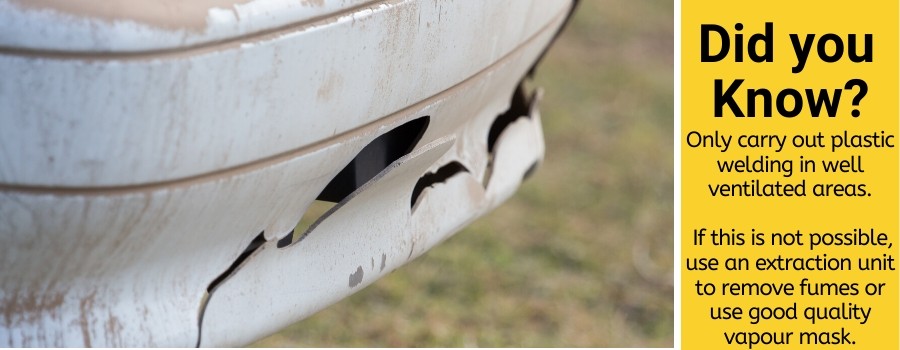
Can you use a soldering iron to weld plastic
Soldering irons can be good for welding plastic to repair damage of wear and tear. It can be used with the addition of wire, such as copper, to help reinforce after damage. It is good to use your soldering iron deep and wide with the crack, to effectively reinforce the plastic.
Plastic welders will obviously be better, because they’re designed specifically to create joints and seams with plastic, but if you’re at home, and don’t want to invest in the right tools, or you just want a quick fix, then using a soldering iron is perfectly fine. It’s best to test it out, see if you’re soldering iron can melt the plastic, and then go from there.
How effective is it
It will do the job, but will not be esthetic. As mentioned, it’s good for repairs or small jobs, but shouldn’t really be used on anything comprehensive. Often, depending on the thickness and size, plastic will need a lot of heat, which can be hard to achieve with a soldering iron alone, i.e. you may need a butane torch.
Soldering iron vs actual plastic welders
Plastic welders can achieve far more sophisticated and comprehensive jobs compared to soldering irons, and will give a stronger, more effective joint. There is a greater range of temperatures with a plastic welder, and will always be temperature controlled, compared to soldering irons which are not.
Plastic welders will create a seamless, professional joint, whereas soldering irons can have some issues with the esthetic of a joint, because of their fluctuating temperature.
How to plastic weld a bumper with a soldering iron
It is best not to use a soldering iron on high-stress areas of a bumper, and instead use a plastic welder, otherwise the joint will simply break again. However, if it has cracked in an area of low-stress, or it is a quick-fix until you take it in, a soldering iron can be used.
Using the correct type of solder and flux is important, so make sure you do your research. When the soldering iron is up to temperature, feed the solder in between the two married surfaces. You want to have the bumper clamped together, to ensure the production of a well-flushed joint. Additional plastic, or another material can be placed within the crack, to reinforce the joint.

